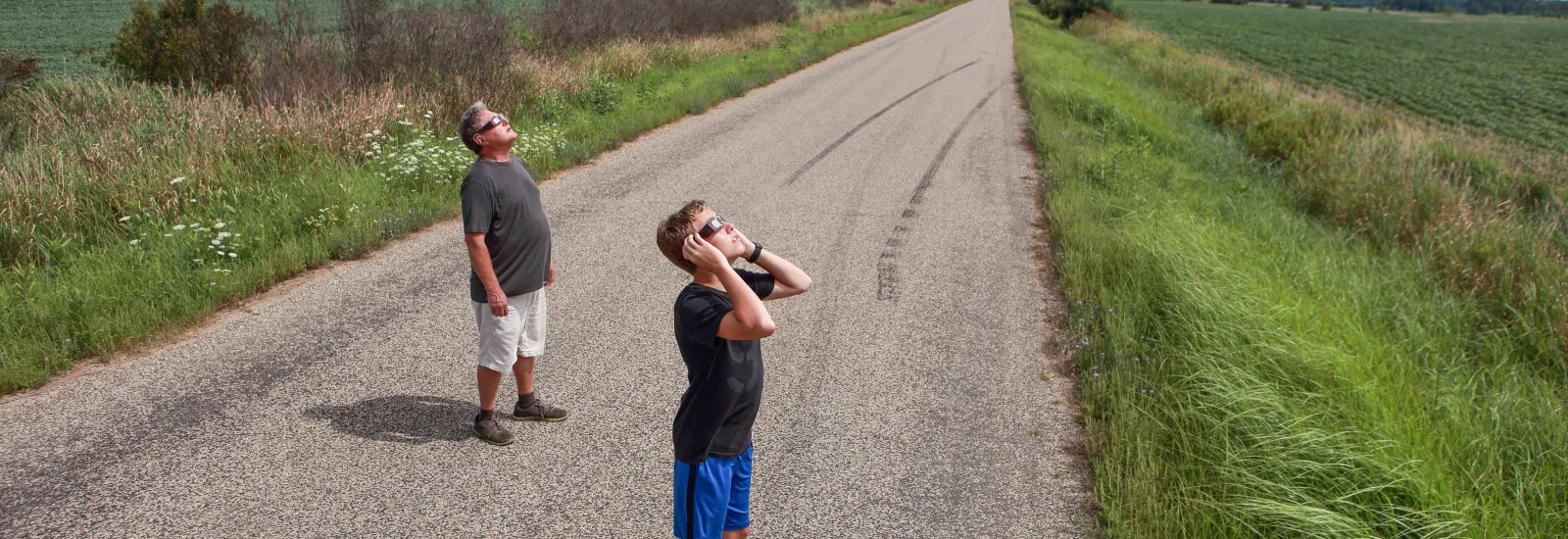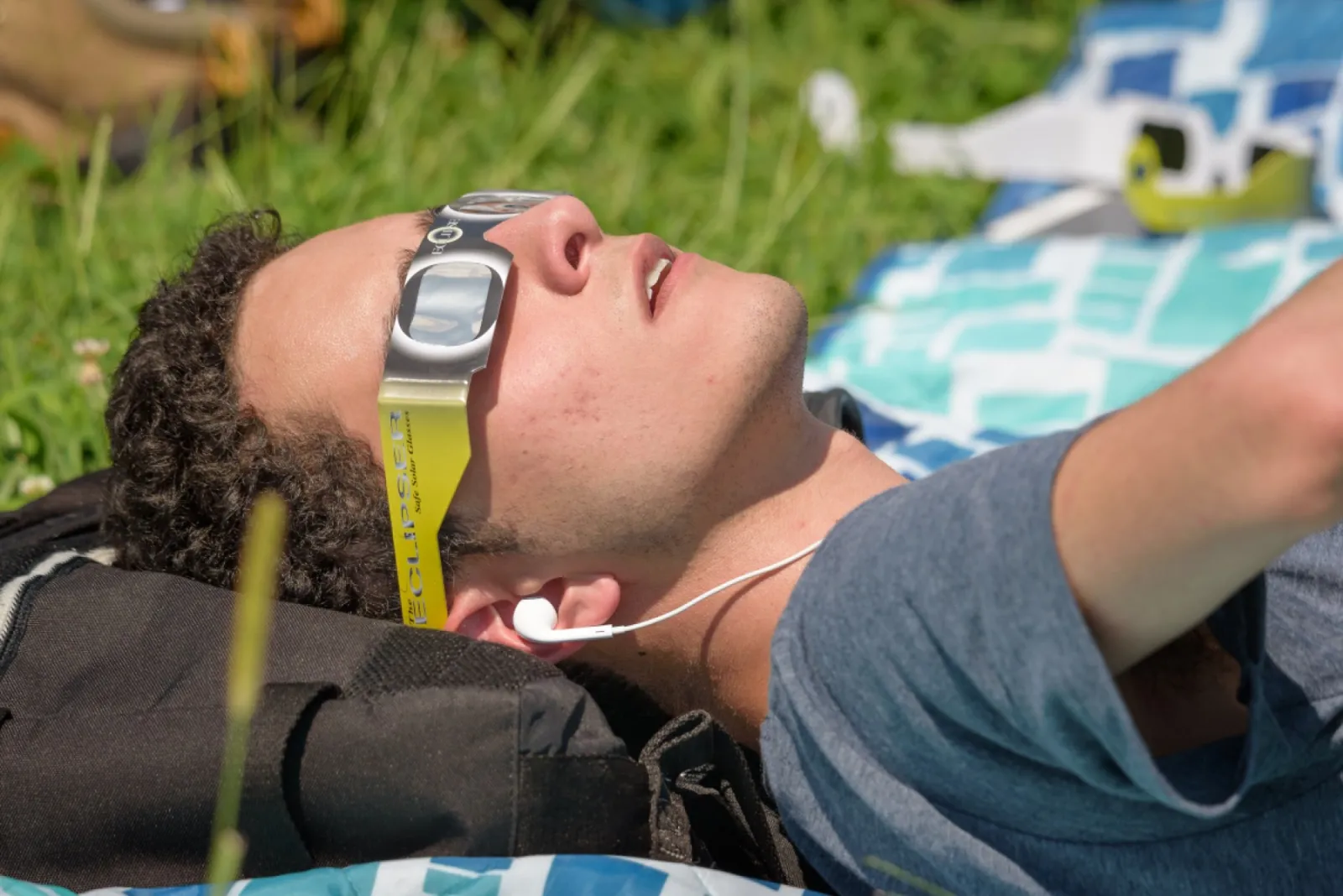
Ensure eye safety for total eclipse viewing with special-purpose safe solar filters
Now is the time
to plan for the Total Solar Eclipse on April 8, 2024.
One of the most important preparations is to have special-purpose safe solar filter eclipse glasses or handheld solar
viewing cards available.
The
special-purpose filter eclipse glasses or viewer cards prevent damage to your
eyes from potentially harmful ultraviolet (UV) and infrared radiation (IR)
light, according to the American Astronomical Society (AAS).
Depending on
the weather and location, viewers can watch the total solar eclipse if they're
in the path of totality. The path of totality is about 125 miles wide for
April's total solar eclipse.
The total solar
eclipse will happen in stages.
During a total
eclipse, the moon passes between the Earth and the sun. The moment the sun is
completely shadowed by the moon is known as totality, and viewers experience a
total solar eclipse. With the moon progressing toward totality, viewers in the
path and those nearby experience a partial eclipse.

Safe eclipse
eyewear is important during the partial eclipse. Except during totality - when
the sun is completely in shadow - viewers must use their special-purpose safe
solar filter eclipse glasses or handheld viewer cards.
Wayne County is
in the path of totality, and every stage of the total solar eclipse will be visible. The estimated time for
totality in Richmond, Indiana, is 3 minutes, 49 seconds. The partial eclipse
phase will last 70-80 minutes for most locations, according to NASA.
Though the time
of totality is brief, you must remember to return to wearing your solar filter
glasses or using the handheld viewer once its evident totality is ending. Once
totality ends, the progression toward partial eclipse begins again until the
moon fully passes, and the sun is no longer shadowed.
Don't fall
for unsafe eclipse eyewear: What to look for before you purchase
Before you purchase eclipse glasses or handheld viewers with a special-purpose
safe solar filter, you should be aware of what to look for to protect your eye
safety and wallet.
The AAS advises
checking eclipse eyewear for the international standard, ISO 12312-2, a filter that safely reduces visible
sunlight and blocks most of the sun's UV and IR radiation. To be certified,
solar-filter manufacturers must have their products tested by accredited,
specialized labs to verify compliance with safety precautions, according to the
AAS. Compliant manufacturers can place ISO 12312-2 on their products and
packaging.
To verify
you're buying from an accredited vendor, check the Suppliers of Safe Solar Filters & Viewers list provided by the AAS Solar Eclipse Task
Force.
Why are
certified solar eclipse glasses or viewers important?
You should never look
directly at the sun. The Indiana Optometric Association shares looking directly
at the sun could cause short-term damage to the front of the eye or long-term
damage to the back of the eye that can result in permanent vision loss.
The solar
filter on the eclipse glasses and handheld viewers blocks the sun's rays from
harming the eye's retina, the layer of cells lining the back wall inside the
eye. The retina senses light, sending signals to the brain so you can see
clearly. By looking directly at the sun, its focused light can burn the retina,
according to the American Academy of Ophthalmology.
The American
Academy of Ophthalmology advises if your eyes hurt after viewing an eclipse, it
might not be a sign of solar retinopathy. Damage from the eclipse is unlikely
to cause eye pain or discomfort because the retina doesn't have pain nerves.
The effects after
exposure might take a few hours to a few days to be noticeable. The Indiana
Optometric Association advises anyone viewing the eclipse and experiencing
symptoms after to visit an optometrist or ophthalmologist as soon as possible
for a complete eye exam to address potentially severe complications, including
vision loss.
Symptoms of
damage include:
- Discomfort
- Loss of central vision
- Distorted vision
- Increased sensitivity to light
- Altered color vision
- Headache
Don't try to
use eclipse glasses or handheld viewer cards with improper eyewear items; doing
so doesn't provide eye protection. The sun's rays could burn through the
eclipse eyewear, causing damage to the glasses or viewer as well as to your
eyes. Cameras and telescopes should only be used with specially approved solar
filters.
Damage can also
occur when using improper eyewear such as:
- Eclipse glasses or handheld viewers with scratches, punctures, tears, or other damage
- Sunglasses
- Binoculars
- Homemade filters
- Welder's helmet glass
- Smoked glass
- Exposed film negatives
Remember to assist
others who need help understanding the sun's harm when viewing the eclipse,
such as young children.
You're
encouraged to safely enjoy the activities throughout Wayne County and the region
during the total solar eclipse on April 8. The next total solar eclipse visible
in the United States won't happen until Aug. 23, 2044.

